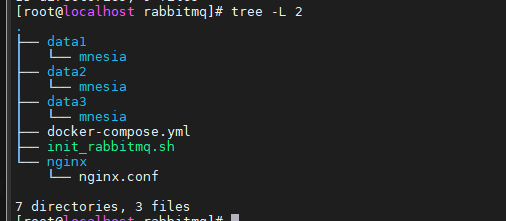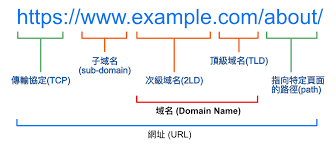# SpringBoot集成EhCache {#springboot集成ehcache}
SpringBoot如何集成EhCache
SpringBoot在annotation的层面实现了数据缓存的功能,基于Spring的AOP技术。所有的缓存配置只是在annotation层面配置,像声明式事务一样。
Spring定义了CacheManager和Cache接口统一不同的缓存技术。其中CacheManager是Spring提供的各种缓存技术的抽象接口。而Cache接口包含缓存的各种操作。
# CacheManger {#cachemanger}
针对不同的缓存技术,需要实现不同的cacheManager,Spring定义了如下的cacheManger实现。
| CacheManger | 描述 | |---------------------------|-----------------------------------------| | SimpleCacheManager | 使用简单的Collection来存储缓存,主要用于测试 | | ConcurrentMapCacheManager | 使用ConcurrentMap作为缓存技术(默认) | | NoOpCacheManager | 测试用 | | EhCacheCacheManager | 使用EhCache作为缓存技术,以前在hibernate的时候经常用 | | GuavaCacheManager | 使用google guava的GuavaCache作为缓存技术 | | HazelcastCacheManager | 使用Hazelcast作为缓存技术 | | JCacheCacheManager | 使用JCache标准的实现作为缓存技术,如Apache Commons JCS | | RedisCacheManager | 使用Redis作为缓存技术 |
常规的SpringBoot已经为我们自动配置了EhCache、Collection、Guava、ConcurrentMap等缓存,默认使用ConcurrentMapCacheManager。SpringBoot的application.properties配置文件,使用spring.cache前缀的属性进行配置。
# application配置 {#application配置}
spring.cache.type=#缓存的技术类型
spring.cache.cache-names=应用程序启动创建缓存的名称
spring.cache.ehcache.config=ehcache的配置文件位置
spring.cache.infinispan.config=infinispan的配置文件位置
spring.cache.jcache.config=jcache配置文件位置
spring.cache.jcache.provider=当多个jcache实现类时,指定选择jcache的实现类
# 入口类配置 {#入口类配置}
加入注解 @EnableCaching
# 缓存注解 {#缓存注解}
| 注解 | 描述 | |-------------|----------------------------------------------------------------------| | @Cacheable | 在调用方法之前,首先应该在缓存中查找方法的返回值,如果这个值能够找到,就会返回缓存的值。否则,这个方法就会被调用,返回值会放到缓存之中。 | | @CachePut | 将方法的返回值放到缓存中。在方法的调用前并不会检查缓存,方法始终都会被调用。 | | @CacheEvict | 在缓存中清除一个或多个条目。 | | @Caching | 分组的注解,能够同时应用多个其他的缓存注解。 |
# 手动使用EhCache {#手动使用ehcache}
在实际开发过程中,存在不使用注解,需要自己添加缓存的情况。下面就以Ehcache为例,简单写一下配置过程。
# 1. 添加依赖 {#_1-添加依赖}
引入springboot-cache和ehcache。需要注意,EhCache不需要配置 version,SpringBoot的根pom已经集成了。
<!-- 缓存 -->
<dependency>
<groupId>org.springframework.boot</groupId>
<artifactId>spring-boot-starter-cache</artifactId>
</dependency>
<!-- ehcache -->
<dependency>
<groupId>net.sf.ehcache</groupId>
<artifactId>ehcache</artifactId>
</dependency>
# 2. 入口类配置 {#_2-入口类配置}
加入注解 @EnableCaching
@SpringBootApplication
@EnableCaching
public class DemoApplication {
}
# 3. EhCache配置 {#_3-ehcache配置}
在src\main\resources目录下,添加ehcache.xml文件,内容见文末。
# 4. application.application配置 {#_4-application-application配置}
# 配置ehcache缓存
spring.cache.type=ehcache
# 指定ehcache配置文件路径
spring.cache.ehcache.config=classpath:/ehcache.xml
# 5. 使用Cache {#_5-使用cache}
注入SpringBoot自动配置的bean,org.springframework.cache.CacheManager。 一个简单的测试类:
package com.bbf.frame.test;
import com.bbf.frame.Application;
import org.apache.commons.lang3.StringUtils;
import org.junit.Test;
import org.junit.runner.RunWith;
import org.springframework.boot.test.context.SpringBootTest;
import org.springframework.cache.Cache;
import org.springframework.cache.CacheManager;
import org.springframework.test.context.junit4.SpringJUnit4ClassRunner;
import org.springframework.test.context.web.WebAppConfiguration;
import javax.annotation.Resource;
@RunWith(SpringJUnit4ClassRunner.class)
@WebAppConfiguration
@SpringBootTest(classes = Application.class, webEnvironment = SpringBootTest.WebEnvironment.MOCK)
public class TestCache {
@Resource
private CacheManager cacheManager;
@Test
public void cacheTest() {
// 显示所有的Cache空间
System.out.println(StringUtils.join(cacheManager.getCacheNames(), ","));
Cache cache = cacheManager.getCache("userCache");
cache.put("key", "123");
System.out.println("缓存成功");
String res = cache.get("key", String.class);
System.out.println(res);
}
}
# CacheManager转换 {#cachemanager转换}
// 获取EhCache的管理器
org.springframework.cache.ehcache.EhCacheCacheManager cacheCacheManager = (EhCacheCacheManager) cacheManager;
net.sf.ehcache.CacheManager ehCacheManager = cacheCacheManager.getCacheManager();
net.sf.ehcache.Cache ehCache = ehCacheManager.getCache("userCache");
# 附录 EhCache.xml {#附录-ehcache-xml}
<?xml version="1.0" encoding="UTF-8"?>
<ehcache xmlns:xsi = "http://www.w3.org/2001/XMLSchema-instance"
xsi:noNamespaceSchemaLocation = "http://ehcache.org/ehcache.xsd"
updateCheck = "false">
<!-- 指定一个文件目录,当EHCache把数据写到硬盘上时,将把数据写到这个文件目录下 -->
<diskStore path = "java.io.tmpdir"/>
<!-- 默认的管理策略 -->
<defaultCache
eternal = "false"
maxElementsInMemory = "10000"
overflowToDisk = "true"
diskPersistent = "false"
timeToIdleSeconds = "120"
timeToLiveSeconds = "120"
diskExpiryThreadIntervalSeconds = "120"
memoryStoreEvictionPolicy = "LRU"/>
<!-- 此缓存最多可以存活timeToLiveSeconds秒,如果期间超过timeToIdleSeconds秒未访问,缓存失效 -->
<cache
name = "userCache"
eternal = "false"
maxElementsInMemory = "100"
overflowToDisk = "false"
diskPersistent = "false"
timeToIdleSeconds = "120"
timeToLiveSeconds = "180"
memoryStoreEvictionPolicy = "LRU"/>
<!-- maxElementsInMemory 内存中最大缓存对象数,看着自己的heap大小来搞 -->
<!-- eternal:true表示对象永不过期,此时会忽略timeToIdleSeconds和timeToLiveSeconds属性,默认为false -->
<!-- maxElementsOnDisk:硬盘中最大缓存对象数,若是0表示无穷大 -->
<!-- overflowToDisk:true表示当内存缓存的对象数目达到了maxElementsInMemory界限后,
会把溢出的对象写到硬盘缓存中。注意:如果缓存的对象要写入到硬盘中的话,则该对象必须实现了Serializable接口才行。-->
<!-- diskSpoolBufferSizeMB:磁盘缓存区大小,默认为30MB。每个Cache都应该有自己的一个缓存区。-->
<!-- diskPersistent:是否缓存虚拟机重启期数据 -->
<!-- diskExpiryThreadIntervalSeconds:磁盘失效线程运行时间间隔,默认为120秒 -->
<!-- timeToIdleSeconds: 设定允许对象处于空闲状态的最长时间,以秒为单位。当对象自从最近一次被访问后,
如果处于空闲状态的时间超过了timeToIdleSeconds属性值,这个对象就会过期,
EHCache将把它从缓存中清空。只有当eternal属性为false,该属性才有效。如果该属性值为0,
则表示对象可以无限期地处于空闲状态 -->
<!-- timeToLiveSeconds:设定对象允许存在于缓存中的最长时间,以秒为单位。当对象自从被存放到缓存中后,
如果处于缓存中的时间超过了 timeToLiveSeconds属性值,这个对象就会过期,
EHCache将把它从缓存中清除。只有当eternal属性为false,该属性才有效。如果该属性值为0,
则表示对象可以无限期地存在于缓存中。timeToLiveSeconds必须大于timeToIdleSeconds属性,才有意义 -->
<!-- memoryStoreEvictionPolicy:当达到maxElementsInMemory限制时,
Ehcache将会根据指定的策略去清理内存。可选策略有:LRU(最近最少使用,默认策略)、
FIFO(先进先出)、LFU(最少访问次数)。-->
</ehcache>
 51工具盒子
51工具盒子




